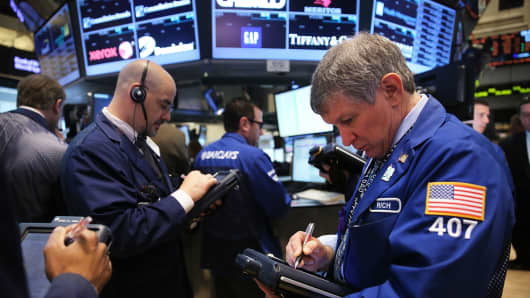Elsewhere:
1) Another central bank cuts rates to combat its strong currency ... this time it's South Korea, which follows New Zealand and Australia. This is a direct snub to Japan and the G-20, who have actively been discouraging "competitive devaluations." The Japanese stock market was down 0.7 percent.
2) Busy day for initial public offerings: five of them at the New York Stock Exchange—but not a lot of enthusiasm. Of the five, one (Emerge Energy Services, symbol "EMES"), priced below the range; one (American Residential Properties, "ARPI") priced at the low end of the price talk of $21 to $23 a share; and two priced in the middle of the range: Cyan ("CYNI") at $11 a share on price talk of $10 to $12 a share, and PennyMac Financial Services ("PFSI") at $18 a share on price talk of $17 to $19 a share.
Only Quintiles priced at the top end of the range—$40 a share on price talk of $36 to $40 a share, and also offered more shares (23.7 million) than the 19.7 million expected. It is the world's largest provider of biopharmaceutical development services—it picks up the ball once a company has developed a drug and helps move it through the approval pipeline. It went private 10 years ago and were acquired by private-equity firms Bain Capital and TPG in 2007. The company is coming to market with a negative net tangible book value of $17.11. That is NEGATIVE $17.11. That is highly leveraged.
David Menlo at IPOfinancial.com has highlighted the problem for IPOs all year ... do you pander to the issuer or to the buyer? It's a tug of war on pricing, with a little more weighting on the side of the investors—a shot across the bow that investors are not willing to overpay for companies.
David characterizes the market as "tentative."
3) Retail sales for April, up 2.8 percent, according to RetailMetrics, a slight disappointment ... poor weather was a problem. There was an extra selling day in the month, so the comps were easy. The good news: May should be better. Ann said that May was improving, Ross Stores was up 7 percent, and TJX was up 8 percent, at the high end of plan. One piece of good news: No downward guidance from anyone.
We're down to 14 companies now reporting monthly same-store sales, out of roughly 120 publicly traded retailers.
—By CNBC's Bob Pisani










